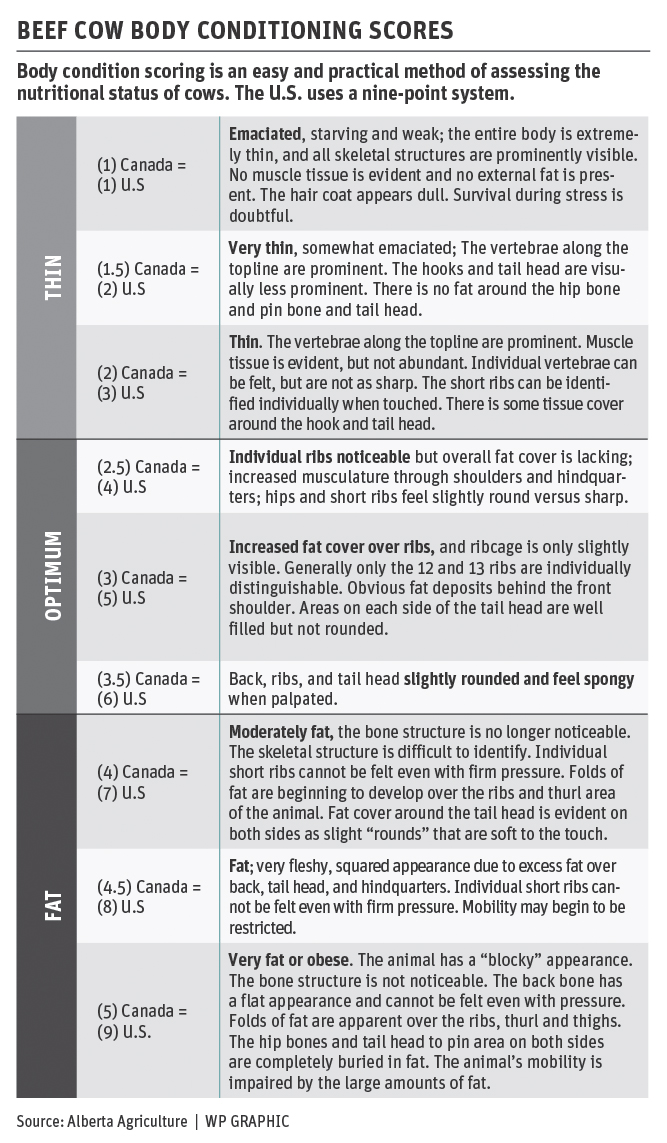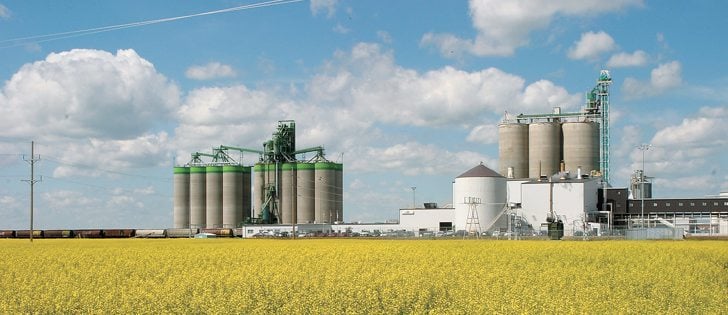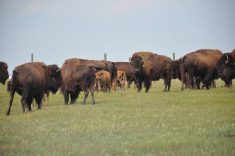Body condition scoring is the practice of assessing the amount of fat cover on a cow’s body.
Condition scoring assesses the layer of fat over short ribs, spine, either side of the tail head, as well as hooks and pins. Assessing them by appearance can be deceiving, especially if the animals have a heavy hair coat, said beef specialist Barry Yaremcio of Alberta Agriculture.
“By the time you see the short ribs by eye, those cows are down 200 to 350 pounds, a condition score down,” he said.
Read Also

Trump’s tariffs take their toll on U.S. producers
U.S. farmers say Trump’s tariffs have been devastating for growers in that country.
If cows end up thin at the end of a hard winter, it could affect their ability to get pregnant again and their ability to produce adequate colostrum and milk for the newborn calves, said Yaremcio.
“It might take two or three months for them to gain that amount of weight back and they can’t do it after calving,” he said.

The cow is eating for two by trying to maintain weight and feed a calf. Peak milk lactation occurs eight weeks after calving.
“Colostrum starts to be formed four to five weeks before calving. They need the body condition score to allow them to use the energy and nutrients that are needed to provide a high quality, high volume colostrum the calf needs,” he said.
After calving, maximum feed intake takes place 12 weeks later.
If the cow is not getting sufficient quantity and quality of feed, it burns its own fat to keep alive, which slows down milk production and inhibits rebreeding.
The cows take longer to start cycling again and first service conception rates could be down 20 to 25 percent depending on severity of weight loss.
Calving later in the spring has advantages because the cows are able to eat green grass, but that may not be enough to get back in shape.
“Higher quality grass, more protein and soluble sugars may help them gain more weight, but if they have dropped any amount of weight after calving and before the bull is put in, their reproductive efficiency drops like a stone,” he said.
Thin heifers also struggle. They are still growing and they use some of the energy that should go to the calf to take care of themselves.
Thin heifers have calving difficulties where 60 percent of the calves may need to be pulled. These young females often do not have the energy or muscle tone to push a calf out.
The Canadian body condition score system uses a one to five system. The optimum score is three.
Cows can be checked during the fall pregnancy exam or start of the winter feeding program.
At calving, the optimum score for mature cows is 2.5; optimum score for first-calf heifers is three.
About 30 days before the start of the breeding season the cow should be 2.5.
“If you find your cows are a little thin going into the fall after a dry summer, calves can be weaned at 130 to 140 days without problem,” he said.
This gives the cows a couple months to gain weight to go into winter with a body condition score of three versus two.
Going into winter, cows should score about three so they have enough fat cover for insulation. They will require less energy so they eat less.
Thin cows should be pulled and put in with the growing heifers or feeder calves so they get more rations to help them gain weight over winter.
“Don’t leave them out there with the rest of the herd. You have got to treat them differently and get them back into shape before calving comes along,” Yaremcio said.
Over fat cows are not good.
“That will also reduce their ability to have a calf because they get cystic ovaries and they don’t come into heat,” he said.
According to Alberta Agriculture calculations, a cow needs about 1,900 Mcal of digestible energy to move up one condition score. This is the equivalent of more than 1,200 lb. of barley grain or almost a tonne of average quality hay.
Besides adequate feed, cows require trace minerals because the forages and feeds grown in Western Canada are typically short of copper, manganese, zinc and selenium.















